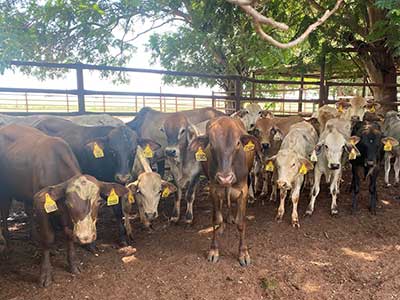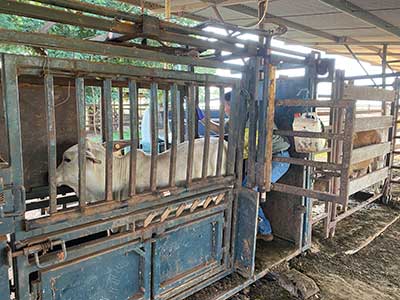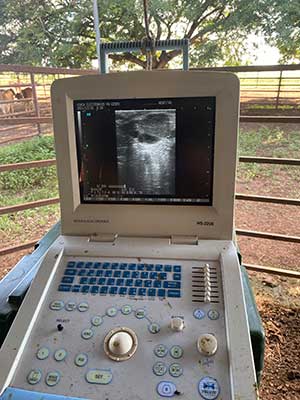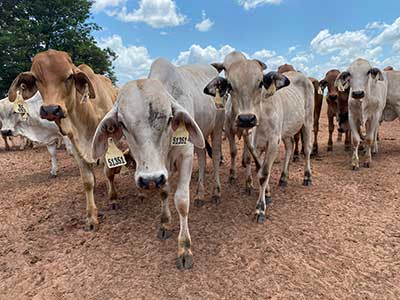Recent fieldwork at Douglas Daly Research Farm
In December 2021, Katherine Livestock Industries team members Gretel and Christie, and Darwin-based Acting Livestock Director and Principal Livestock Research Scientist, Tim Schatz, travelled to the Douglas Daly Research Farm for the annual 400 day data collection for the selected Brahman and Composite yearlings (figure 1).
In the first week of December, the trio mustered the bulls and weighed them with a 12 hour curfew to ensure accurate and comparable weights. Their body condition score, hip height and scrotal circumference was measured, as well as semen collected and analysed using a microscope crush side for motility and morphology. The weight and the scrotal size for each animal is sent to Breedplan to be analysed for 400 day estimated breeding values (EBVs), and the other data collected is used to select bulls for the upcoming mating season (January to March 2022). The bulls are selected based on a selection index, which takes into account their weight, scrotal size, percentage normal sperm, horn status and dam performance. The average scrotal circumference was 21.2cm for the Brahmans and 21.6cm for the Composites. Seventy seven per cent of the Brahmans and 84% of the Composites that were tested had normal sperm.
Once the bull testing was finished, the selected Brahman and Composite yearling heifers were mustered and weighed with a 12 hour curfew (figure 2). Their body condition score and hip height were collected, and they were also ovarian scanned to detect if they had reached puberty before going into mating. The heifer’s ovaries are scanned with an ultrasound and the size of the follicle is recorded (figure 2 and 3). A corpus luteum (CL) indicates that an egg has been released from the ovary. If a CL is seen on an ovary, the heifer is cycling and has therefore reached puberty. Eleven per cent of the Brahman heifers and 22% of the Composites were found to have reached puberty.
The data collected during this period of testing contributes to decision making for the Repronomics 2 and the Select Brahman and Tropical Composite Projects. The females within the Repronomics 2 herd are contributing data to increase accuracy of female fertility EBVs to allow producers to select highly fertile animals to increase the overall profitability and efficiency of their herds (figure 4). The Select Brahman and Tropical Composite herd have been selected for over 15 years to breed the most fertile animal that is adapted to the tropical environment while also meeting the weights required for the live export market. These projects have allowed the Department of Industry, Tourism and Trade to produce a highly fertile herd that is made available to the industry through the department’s annual bull and cow sales.




